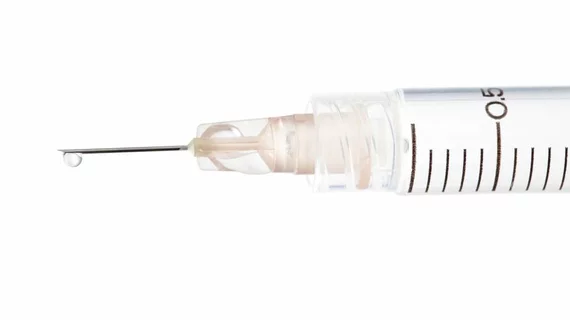As an adjunct to standard treatment for patients with type 2 diabetes, liraglutide appears at least as protective against cardiovascular events for patients with chronic kidney disease (CKD) as for those without CKD, according to a subgroup analysis of the LEADER trial published in Circulation.
Patients with type 2 diabetes and hemoglobin A1c at 7 percent or higher were eligible for the study, as long as they were older than 50 with at least one cardiovascular comorbidity—including previous myocardial infarction (MI), previous stroke, documented heart failure or coronary heart disease or CKD stage 3 or greater—of if they were older than 60 with one cardiovascular risk factor. Participants were then randomized 1:1 to receive either liraglutide or placebo, both in addition to standard-of-care treatment.
The initial trial found liraglutide was associated with a 13 percent reduction in the composite of cardiovascular death, non-fatal myocardial infarction and nonfatal stroke. With these results, the injectable drug gained an FDA indication to reduce the risk of major cardiovascular events for adults with type 2 diabetes and established cardiovascular disease (CVD).
But in this post hoc analysis, Johannes F. E. Mann, MD, and colleagues aimed to evaluate the glucagon-like peptide-1 receptor agonist’s treatment effects in patients with and without kidney disease.
For patients with CKD—estimated glomerular filtration rate (eGFR) below 60 mL/min/1.73 m2—liraglutide was associated with a 31 percent reduction in the composite primary outcome compared to placebo treatment. The risk reduction was 6 percent for those with eGFRs above that threshold.
In addition, there wasn’t a significant difference in terms of medical adverse events or hypoglycemia associated with either placebo or liraglutide, although event rates in both groups were more common in those with renal disease.
“The present results demonstrate that the results of the LEADER trial on CV efficacy and on safety of liraglutide apply to patients with CKD, which is clinically important given that those patients with type 2 diabetes and CKD have a high CV risk burden and few options for antihyperglycemic therapies,” reported Mann, with KfH Kidney Center in Munich, and coauthors.
Mann et al. also noted the risk reductions for patients with eGFR below 60 mL/min/1.73 m2 were greater for the individual components of the endpoint. Hazard ratios compared to placebo treatment were as follows for those with eGFR below and above that threshold, respectively:
- Non-fatal MI: 0.74 and 0.93
- Non-fatal stroke: 0.51 and 1.07
- All-cause mortality: 0.74 and 0.90
It’s important to note CKD patients are at higher risk and more prone to these outcomes, so it is easier to slash a larger percentage of CVD outcomes in this population.
“Liraglutide had pronounced lowering effects on HbA1c and weight, and slight lowering effects on (systolic blood pressure) and LDL-C,” the authors wrote. “Those effects did not appear to be different in those with or without low eGFR or micro/macroalbuminuria while the modest blood pressure-lowering effect of liraglutide may be confined to those with normal eGFR and normoalbuminuria. Liraglutide is not eliminated by the kidney, and its pharmacokinetics appear to be unchanged with decreasing eGFR.”
The researchers pointed out the LEADER trial was powered to assess the composite outcome in all patients. Therefore, breaking down the findings into subgroups and individual components of the primary outcome leaves those results exposed to a lack of statistical power “and issues related to multiple comparisons.”
“As such, significant results may be chance findings,” they noted.

